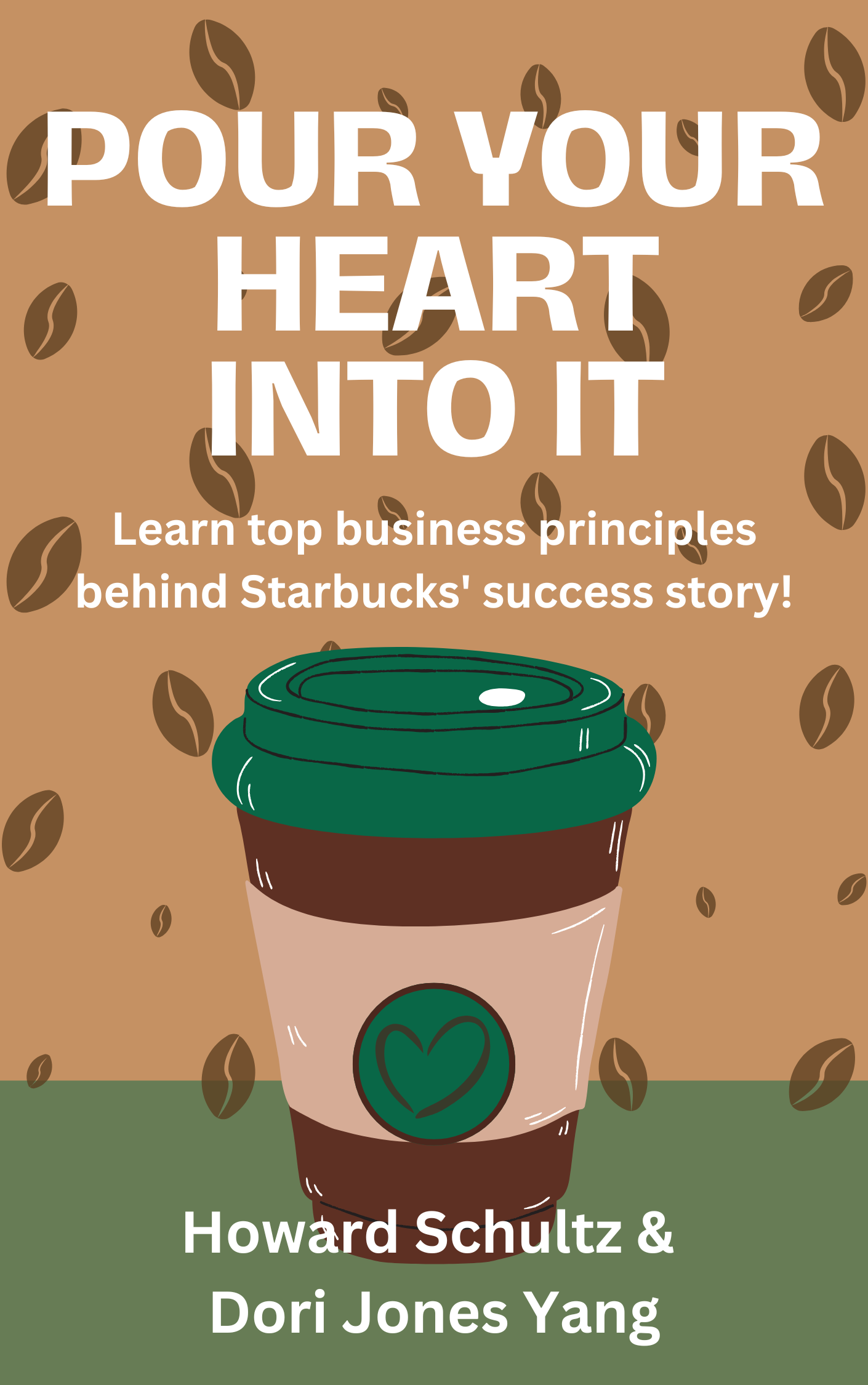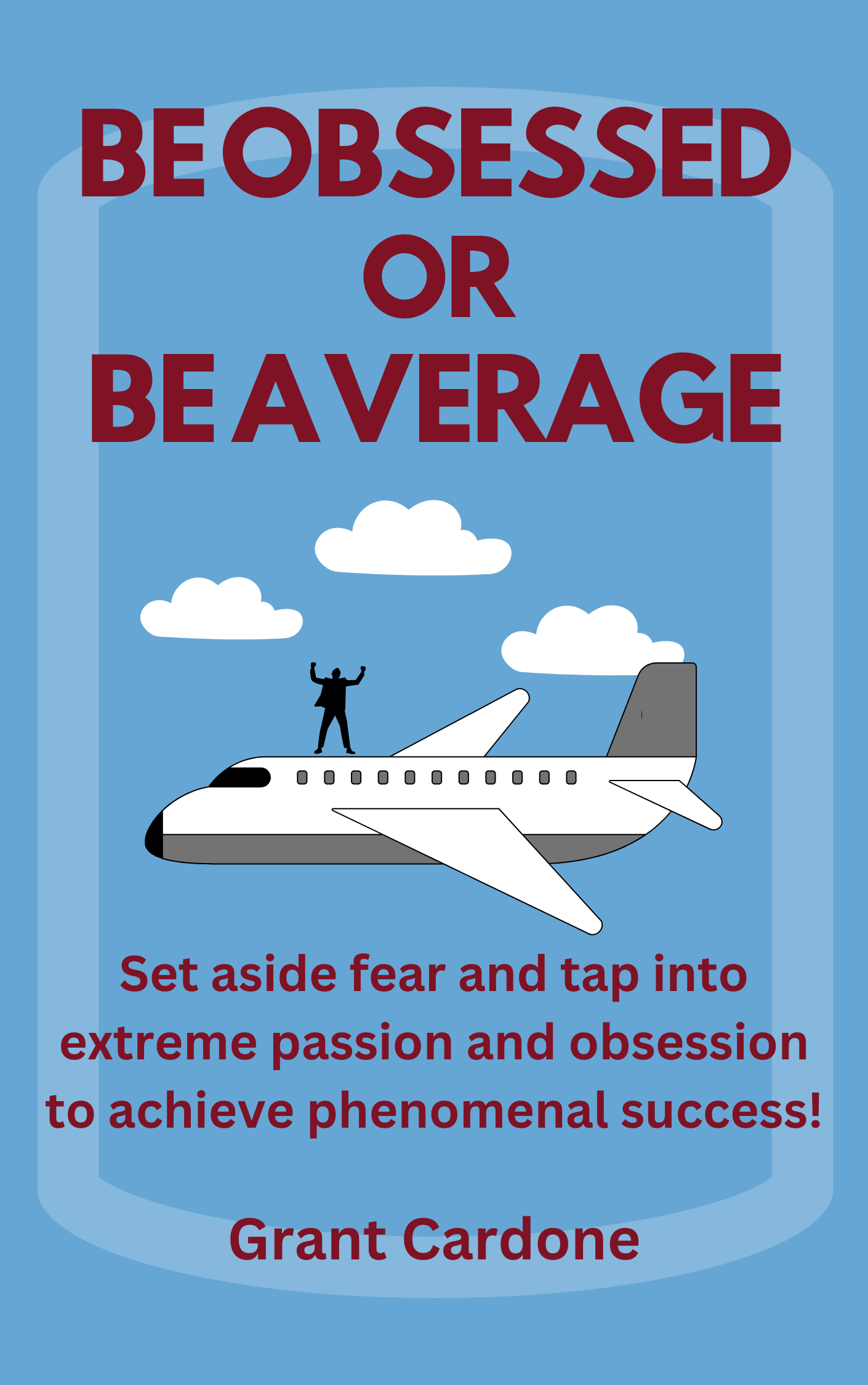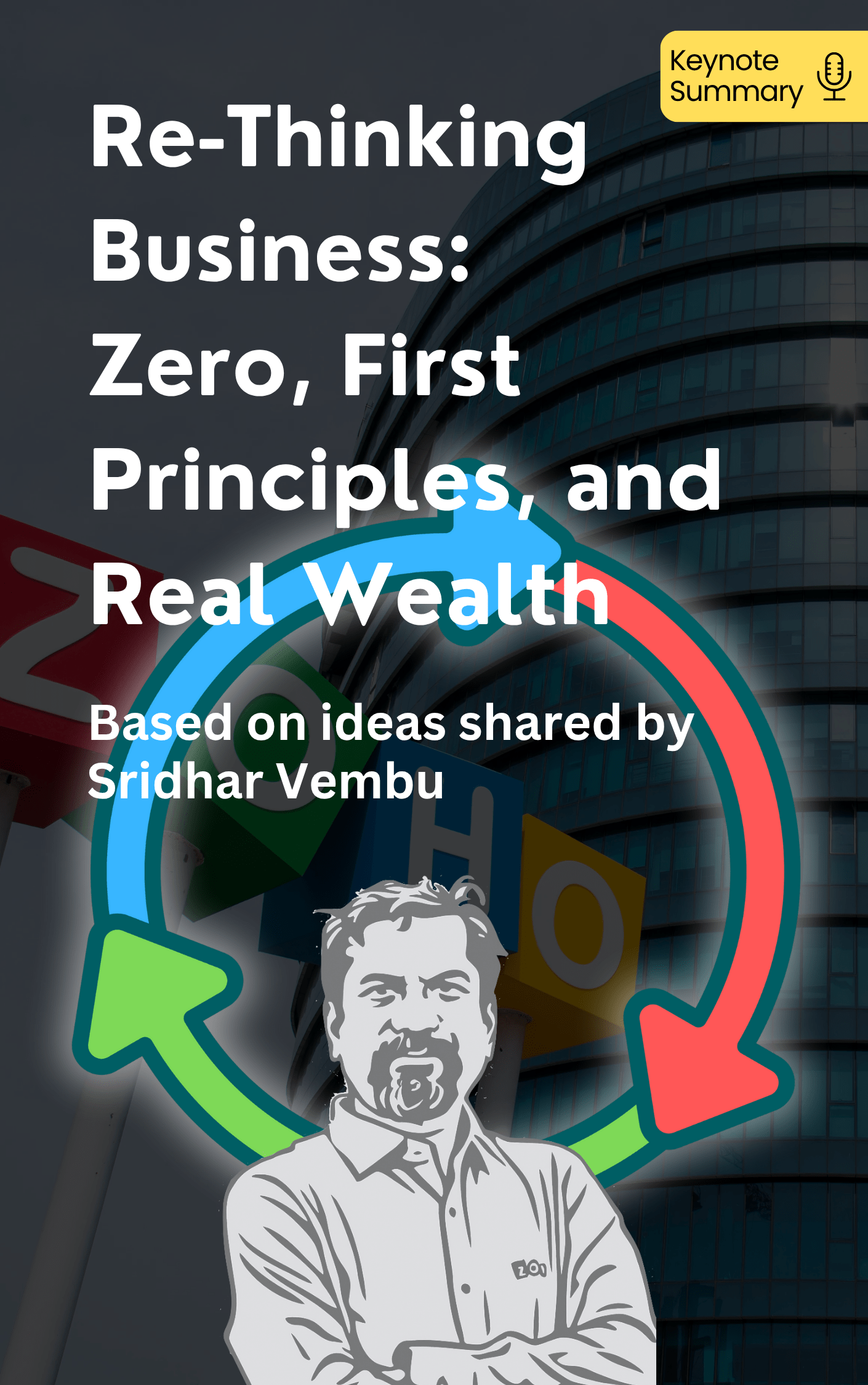Introduction
Are you aware that Starbucks opens a new store every single business day? That it has over 30,000 stores in 80 countries? And that, it all started from one single store in Seattle? Witness the meteoric rise of Starbucks Coffee Company and get insights into the principles that made the brand a success story.
Pour Your Heart Into It: How Starbucks Built a Company One Cup at a Time (1997) by Howard Schultz and Dori Jones Yang offers useful business advice: To keep a business going strong, make genuine high quality stuff people truly want, keep your image fresh, and stick to values that guide your choices.
Schultz, btw, is the former CEO and Chairman of Starbucks Coffee Company.
Let’s get straight to it, then. First up, all the way back to 1981!
Authentic, High Quality Products Are Essential
When Starbucks first opened its doors in 1971, it didn’t set out to become the world’s largest coffeehouse chain. Rather, its founders were simply passionate about bringing high quality, dark-roasted Italian style coffee to Seattle's coffee lovers. This passion for authentic, excellent coffee has remained at Starbucks’ core for over 40 years, proving to be the secret ingredient to the company's tremendous success story. A little context first: Italy is renowned for its coffee culture and preparation methods. Know why? They roast coffee beans to a very dark color, which brings out the best smell and taste. This was the traditional Italian coffee - bold, rich, and intensely tasty. Today, it is available just about everywhere, but Starbucks was actually the first café to adopt this technique and drive Americans crazy!!
Starbucks' team attributes its exponential growth and success to several factors. Commitment to premium-quality and dark-roasted coffee beans is one such factor that's a constant in the brand's journey. No matter the circumstances, the brand never compromised on its quality.
In 1994, a frost damaged much of the coffee crop in Brazil sparking a coffee crises. Coffee prices went from $ 0.80 to $2.74 within a few days. Even then, Starbuck upheld its standards. While their competition was cheating customers, Starbuck preferred to decrease other costs, rather than switching to cheaper coffee beans. The result? Starbucks profited from a loyal customer base who knew they could always count on Starbucks for a premium cup of coffee.
And that's an essential lesson for startups - to stick to quality in products/services and remain authentic throughout the journey. Next up, your idea won’t work if you aren’t stubborn!
Crazy dedication In Business Might Yield Promising Results!
Business ventures are no walk in the park. You’ll face issues and you will be tested. But, can being stubborn and relentlessly persistent help you turn entrepreneurial dreams into billion-dollar realities? Howard Schultz's journey proves, yes it can. His incredible story shows how perseverance can be an essential element for a brand's success.
It started in 1981 when after tasting the best cup of coffee he ever had at a small Starbucks cafe, Schultz became obsessed with the brand! He desperately wanted to be part of the company. Yet when he proposed himself for a job at Starbucks, turned down cold! The founders dismissed him as too aggressive and eager to change things up.
For most aspiring entrepreneurs, that's where the story likely ends, right? One “no thanks” and we let the dream die. But Schultz? He had the audacity to call them and make them rethink their decision and guess what? Got the job! But the plot thickens, because a few years later, Schultz hit another roadblock. This time, he wanted to expand Starbucks but was not allowed. And the man just straight up walked away! He started his own coffee shop, Il Giornale.
Raising capital for Il Giornale proved intensely difficult, with 217 investors saying “no” to Schultz’s ambitious plans. Again, his determination and persistence helped him. Schultz did not give up and managed to find investors to launch his coffee shop. And guess how the story ends? His venture profited so much that he eventually bought Starbucks with the money he earned. He made Starbucks what it is today! Just imagine if he had just given up at any stage.
Now, only persistence is not enough. It needs a bit of extra on the side to really work.
Build a relationship based on trust with your team!
Trust has been a trademark of Starbucks’ success story! “Treat people like family and they will be loyal and give their all.” That’s the Starbucks motto. And they reflect their motto in concrete policies and practices that convey true care for employees. With impressive benefits offered even to part-timers and stock options in “Bean Stock” that literally impart shared ownership, Starbucks empowers employees with the message: You are not just staff, you are true partners. During the quarterly Open Forum, Starbucks actively asks for feedback from its employees.
Exemplary and innovative!
Employees are happy with Starbucks and enthusiastically partake in its endeavors to grow and prosper. So much so that Starbucks employees have adamantly opted to remain union free since 1992 – Schultz quotes his HR man saying “You trusted us, and now we trust you.”. They give it their all!
With such resilient bonds of trust built, Starbucks has uniquely low turnover rates. A turnover rate refers to the percentage of employees who leave a company during a certain period of time. Various factors fuel turnover within typical companies, from paltry pay to hassling policies. The yearly turnover rate of Starbucks is far lower (65%) than other retail stores (up to 400%). This consistency within Starbucks’ workforce creates an awesome cycle: lower turnover eases recruitment headaches and slashes onboarding costs. This in turn means customers and workers are familiar with each other. The element of familiarity creates a personal connection for the customer; maintaining the customer base. Starbucks setting the gold standard, don’t you think?
So that was about authenticity and trust, next up: sticking to values.
A Value-Driven Business Will Succeed In The Long Run!
The majority of us lead a value-driven life but give up as soon as the going gets tough. But successful businesses don't flip flop like that - they know sticking to their values pays off down the road. Even when times are tight, they don't dump their vision just to make quick money. Why? Because customers dig consistency!
So, how does the global coffee giant ensure each cup meets the same standards? By never straying from core values of authenticity and trust. Not to say they don't get tested in ways both big and small. For instance, when flavored coffee beans became popular in the market, many customers asked why their local Starbucks didn't carry the blueberry or vanilla varieties. However, the company continued to politely decline these requests. Flavored beans from other brands are just off-limits! Why? Because infusing external flavors would degrade the signature taste profile achieved through meticulous cultivation partnerships going back 42 years. Authenticity!
Hand in hand with authenticity goes maintaining the customers’ trust. Both are important values at Starbucks. They don’t always refuse their customers outright. Instead, they demonstrate the same authenticity when adopting necessary changes. For instance, customer interest grew around low-fat milk options better suited to certain diets or health goals. However, the management balked; what if the skim milk undermine the flavor of their core classics? What followed was an extensive experiment on low-fat products. Only after they were sure that authentic taste will not be compromised, the low-fat Caffe Latte came into being!
The team put in a lot of effort to handle the situation and introduced a product only after investing time and money. The fruits of living their values? An unparalleled 50+ year legacy with no end in sight.
Coming up next, we have some investment lessons for you!
Schultz Was Courageous Enough To Invest Above The Growth Curve, And So Should You!
The business world is littered with once-promising startups that flamed out after early wins, lacking the operational backbone to transform early momentum into sustained leadership. Here’s how Starbucks escaped this reality.
Schultz always recognized major growth potential in Starbuck. He had a vision for over 300 stores of Starbucks - even with only 20 locations at the time. Such explosive growth was only possible if the management was ready to invest in infrastructure, systems and talent well ahead of immediate needs - what business strategists call ‘investing above the curve’. What that means is they didn't just react when they lacked something - they prepared before those things were urgently required.
Starbucks faced multiple challenges during the initial investment phase. The brand was committed to roasting its own beans and required additional roasting facilities. Also, they needed to build a management team capable of steering rapid expansion. The aggressive investments required for this meant steep losses and raised worries in 1987 through 1989. But Schultz held firm! Following the vision was important for him. So, despite initial losses, the CEO managed to keep the investors in high spirits and pursued his dream of growing the brand.
His convictions were rewarded: profits returned in 1990, justifying the company’s investing philosophy and with foundations enabling it to soon eclipse rivals. Today, Starbucks owns more than 33,000 stores worldwide just because Schultz was brave enough to transform his dreams into reality. So, investing above the growth curve is a sound business tip for anyone who wants to make it big! Our tip: If you wanna make it big, you can't play it safe - you just have to take that leap of faith and put your money on the line. As simple as that! Think of the losses stemming from investing above the curve as the down payment on eventual success.
Moving on to how to maintain your brand image.
Brand Renewal Is Crucial To Stay Relevant In Business!
No matter how hot a brand, nothing stays fresh forever on legacy and nostalgia alone. So, reinventing yourself ahead of time as per changing business realities is crucial. The management at Starbucks is well aware of this and believes in brand renewal from time to time, before things get boring. Starbucks works on brand renewal through innovation, partnerships and maintaining its essence as times change.
It so happened that a biomedical scientist named Don Valencia experimented with coffee beans in the 1980s. He successfully developed a coffee extract delivering pure flavor and aroma minus typical acidity and bitterness. His finer-tuned coffee concentrate was THE REPLICA of freshly brewed coffee. He took his formula to Starbucks and it led to the creation of products like coffee-flavoured ice cream and instant bottled beverages. And thus, with innovation, the company succeeded in spreading its brand to new audiences beyond store locations through grocery shelves around the world.
Brand renewal doesn't always come strictly from within, however. Major companies form partnerships with other enterprises to brainstorm complementary ways they can create and deliver original offerings together or even expand into international markets - enter the joint venture. This was the motivation behind Starbucks signing a joint agreement with PepsiCo in 1994 to collaborate on bottling and distributing chilled coffee beverages aka the famous bottled Frappucino. Working with such a big company gave Starbucks access to an even wider market. Working with a brand as big as Pepsi was not easy but both the companies worked together to find a common ground and showed how collaboration can take companies towards a successful path.
Now, business growth just isn’t possible without staff so let’s work on getting that staff right!
Hire Employees With The Right Skills And Give Them Space to Make Their Mark
How exactly does such a giant become a giant? By keeping an open mind, empowering employees, and never being afraid to try new things, says Schultz!
Starbucks realized early on the limits of flying solo. Do we all have enough hours in the day or brainpower to be experts at everything? Of course not! Recognizing gaps is step one. Step two is letting the right innovative people run free with the authority to create change.
Back in the days of initial expansion, Schultz hired talent like a master programmer who’d built IT systems for McDonald’s worldwide operations. With full autonomy, she crafted cutting-edge point-of-sale tech that still enables smooth transactions at 30K+ Starbucks today. Not bad for an empowered outsider! You not breathing down their necks the whole time? That's the way to go. You need to trust that the people you hired as experts do really know what they're doing. So, let them do their thing, okay?
But game-changing ideas can also come from fresh internal voices. Howard Behar joined Starbucks in 1989, and rapidly re-envisioned operations with a people-first mentality. How’d that go over with longtime company veterans? About as well as you’d expect! They initially bristled at outspoken criticism from this new kid on the block. Yet the wise ones tuned their ears to hear the opportunity beneath Behar’s calls for improvement. Remember the whole deal with Open Forums for feedback? Make a wild guess whose idea that was. You got it! It was Behar!
By embracing change rather than clinging to “the way we’ve always done things,” Starbucks set an example on how to do it right!
Our last segment is all about creating an intimate work culture.
Show Some Humanity, and Don’t Forget Your Principles!
Starbucks still feels like your trusty neighborhood café. It's a multi-billion company, people! Seriously, how does it not stink of corporate competition? How’d they pull it off? Let’s quickly peek behind the curtain! Starbucks has grown into a massive company, because they've managed to hold onto the heart and soul that made them special in the first place. Unlike so many others that lose their way when chasing profits, Starbucks still inspires pride in their employees and warm feelings of authenticity from their loyal customers. An impressive feat if you ask us!
And you know those Bean Stock programs granting employees stock ownership opportunities? That makes every worker out there a possible partner in shared success! And have you ever wondered if Schultz actually communicates one-on-one with individual cafes? You bet he does - through regular voicemails and emails checking in. Meanwhile regional teams and HQ leadership meet face-to-face to trade ideas and inspiration.
What’s the outcome of treating staff like true business partners? Back in ’96, internal surveys already scored off the charts at 88% employee satisfaction and 89% proud to represent the brand. And Starbucks keeps raising the bar! Starbucks teams actually get out there pitching in on neighborhood Green Sweeps, picking up litter to do their civic duty.
But all these warm fuzzies probably distract from the massive environmental impact of avoiding all those double cups that generates crazy waste! Starbucks stepped up to design creative cup sleeves using way less material but providing the same protection. And reusable mugs! Wow! Now that’s conscious capitalism done right!
Chapter 11
Details coming soon.










